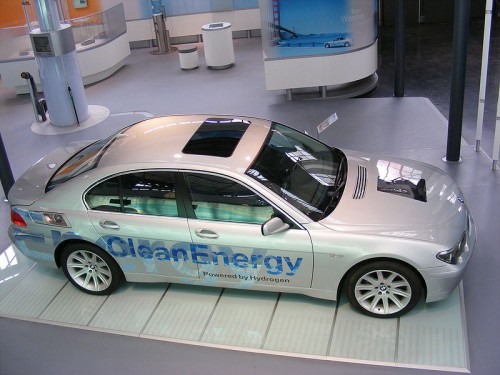In an article published in the prestigious journal Science, the scientists describe how they were able to combine cheap oxide-based materials to split water into hydrogen gas and oxygen gas using solar energy with a conversion efficiency of 1.7%

Electricity production is not the only way in which the sun's rays can be converted into energy on demand. The sun can also initiate chemical reactions that create chemical fuels, for example hydrogen, which in turn can power cars, trucks and trains. Scientists have now succeeded in combining cheap oxide-based materials to split water into hydrogen gas and oxygen gas using solar energy with a conversion efficiency of 1.7%, the highest rate reported so far for an oxide-based photoelectrode system.
The big challenge of producing fuel with the help of solar energy is the production cost of the semiconductors used to capture the sun's rays and the catalysts used to create the fuel itself. The most effective materials available today to perform this task are too expensive to produce fuel at a price that can compete with the price of gasoline. "In order to develop devices for the production of solar fuel that are economically viable, the cost of the materials themselves and the processes must be significantly reduced while achieving a high conversion efficiency," says chemistry professor Kyoung-Shin Choi from the University of Wisconsin-Madison.
In an article published in the prestigious journal Science, the scientists describe how they were able to combine cheap oxide-based materials to split water into hydrogen gas and oxygen gas using solar energy with a conversion efficiency of 1.7%, the highest rate reported so far for a photoelectrode-based system oxides. The researchers prepared solar cells from the material bismuth vanadate using a method of electrodeposition - the same process used to coat jewelry with a layer of gold or to paint car skeletons - in order to increase the surface area of the compound to an unusual rate of 32 square meters per gram . "Without sophisticated equipment, high temperature or high pressures, we were able to create a nanoporous semiconductor consisting of tiny particles with an extremely high surface area," explains the lead researcher. "A larger surface area means much more contact area with water molecules, that is - more efficient water splitting." The material bismuth and vanadate needs a little help in order to speed up the reaction responsible for creating the fuel, and this is where a couple of catalysts come into play.
Despite the fact that there are many research groups trying to develop photoelectronic semiconductors, and effective catalysts for splitting water molecules, the lead researcher explains that there is only little reference to the interface between the semiconductor and the catalyst. "The problem is that eventually you have to put them together," she says. "Even if you have the world's best semiconductor and the world's best catalyst, their overall efficiency may be limited by the semiconductor-catalyst interface." The researchers took advantage of a pair of simple and cheap catalysts - iron oxide and nickel oxide - and fixed them on top of the material bismuth and vanadate in order to take advantage of the advantage inherent in their strength.
"Since no single catalyst is able to create a good interface with both the semiconductor and the water acting as our reagent, we chose to split the task into two parts," explains the researcher. "The iron oxide creates a good interface with bismuth and vanadate and the nickel oxide creates a good catalytic interface with the water. That's why we used them together." The design of a two-layer catalyst enables simultaneous optimization of both the semiconductor-catalyst interface and the catalyst-water interface. "The combination of these pair of cheap catalysts with the nanoporous electrode with the large surface area gives rise to a cheap photo-electrode system composed entirely of oxides and with peak efficiency," explains the lead researcher.
The researcher hopes that the results of her research will encourage other research groups in the world to achieve progress in this field. "Other researchers testing different types of semiconductors or catalysts can start using our approach to identify the most effective combinations for this task," she notes.

2 תגובות
There is already technology already applied to vehicles.
Decomposition of water into hydrogen by electrolysis
Fuel is fuel is fuel also in the plural,
In Hebrew there is no inflection of concepts that describe a whole to the plural,
Fuels... yuk!